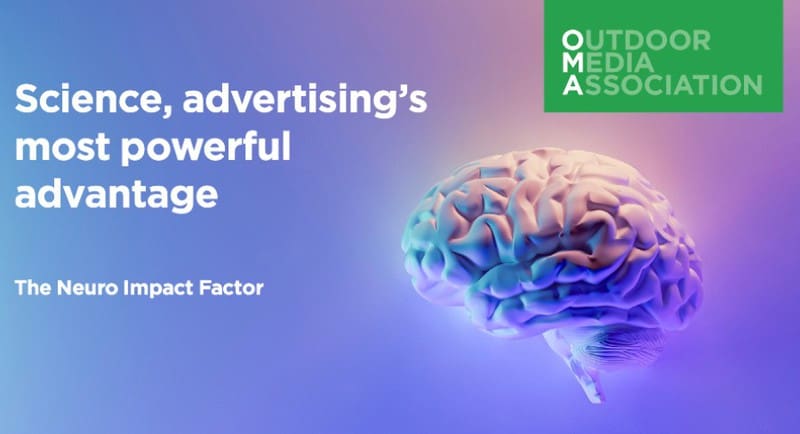Outdoor Media Association (OMA) have released the results of a $1.3 million study undertaken by Neuro-Insight to measure the audience’s subconscious reaction when viewing Out of Home (OOH) signs.
The Neuro Impact Factor (NIF) is a world-first qualitative measure that accounts for the strength and frequency of peaks in brain activity linked to emotional intensity and long-term memory encoding.
The research looked into three areas: the impact of classic and digital formats on the audience, impact of classic compared to digital, the prevailing thought being that digital has an ‘X-factor’ and building the results from the research into MOVE (Measurement of Outdoor Visibility and Exposure) as an additional qualitative tool.
It involved creating a matrix of final measurements covering all OOH formats and audience modes that view the format.
The research also involved constructing and filming routes of everyday journeys to encompass the different formats and audiences, across metro cities – Adelaide, Brisbane, Melbourne, Perth and Sydney – and a regional town, Townsville.
A total of 42 routes covering more than 800 sign locations have been included in the results, and more than 2,000 respondents were recruited.
The respondents needed to be familiar with the market, environments and route they were presented with, and ensure the results were representative of the Australian population.
The results found digital delivered an average of 6% higher NIF score than classic signs and showed that it does have an ‘X’ factor. This is because digital signs delivering both stronger and more frequent peaks above the 0.7 threshold.
It also found that both classic and digital out of home formats similar NIF results to what broadcast media channels and digital can achieve.
Environment played a key role in achieving higher NIF scores, one of the most significant differences was in internal station locations versus airport or shopping centres.
The Neuro-Insight research posited that the high NIF score result in stations was due to it being more ‘sterile’ an environment than the others and therefore the signs stood out.
Movement was also shown to increase NIF scores: movement of the sign such as public transport, movement within the sign and full motion video movement in digital advertising.
Sound also played a part in the results with the highest NIF score being for 6×3 metre full motion video screens with sound on train station platforms.
Mode differences for roadside were evident when comparing in vehicle audience versus pedestrians, with the latter being higher.
Illumination of roadside at night also delivered significantly higher results with digital signs increasing NIF scores on average by 50 percent and classic by 98 percent on the same locations compared to daytime.
Professor Joel Pearson PhD, director, Future Minds Lab & Professor in the School of Psychology The University of New South Wales, Sydney, Australia, said: “When it comes to business and advertising, science is more powerful than finance.
“Running the numbers is easy, understanding why something happens or doesn’t happen, or why people don’t like something or love it, is infinitely harder because it is a mystery.
“The OMA Neuro-Impact study used science to solve this mystery by measuring the brain’s reaction to the world it saw. Way more powerful than solving the numbers equation. The study outlined here is the future of advertising.
He noted that in the coming years agencies and clients will do similar research going that goes beyond advertising as businesses understand insights about how peoples reaction to their products, services and practices can be uncovered by the human brain.
“Science is the most powerful strategic advantage any company can have. Running agile and accurate scientific studies is the best investment any company can make,” Professor Pearson added.
To conclude, OMA noted they expect sellers and buyers will use the NIF scores alongside reach and frequency to help optimise the formats used to effectively meet the campaign objectives.
“While a high NIF score may be desirable to maximise impact it will likely be trade off with reach and/or frequency (eg. a higher impact score achieved by the digital signs compared with greater presence in market due to all day each exposure on the classic sign).”
“There will of course be variations to this depending on audience dwell and share of time on digital screens being bought,” the OMA report concluded.
